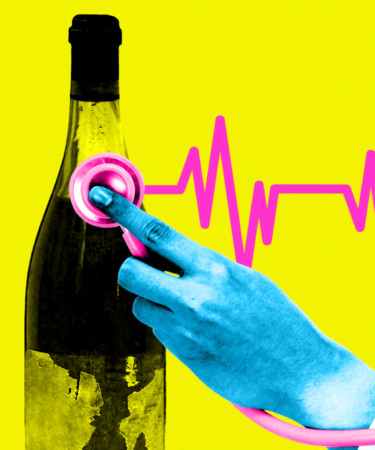When starting a wine cellar, it can be tempting to buy as many bottles as possible, shove them in a cool, dark place, and not touch them for 15 years. But that tactic doesn’t work for every bottle, with some wines hardly changing after years of storage and others prone to overaging.
To figure out this delicate balancing act, VinePair spoke with Zach Geballe, sommelier, wine educator, and co-host of the “VinePair Podcast,” to get his thoughts about the perfect time to crack open that bottle you’ve squirreled away.
“If I were going to generalize, I would say that the vast majority of wines produced today are intended to be drunk right away,” says Geballe. “There is only a fraction of wine designated and created for significant aging, but those wines generally get more attention because of it.”
When aging a wine, there are three different stages a bottle will go through: young, peak, and peaked. Young wines are generally unbalanced and fresh, often with a little bit more tannin, fruit, or acid than what is desired. Aging young wines will mellow out and give complexity to those flavors. Peak is the term used for when a wine is at its prime. At this point, it will be well balanced, layered, and smooth on the palate. A wine that’s peaked, or over-matured, will have been stored in the cellar for too long, and most of its once-vibrant characteristics will taste a bit deadened or faded — “almost like a photograph,” Geballe says.
“It took me a while to learn, as it does most people, that maturation and aging of wine is not linear. It all depends on so many different opposing factors,” he says. Though aging wines was once thought of as a necessity for wine collectors, Geballe says this is changing. “These days, the number of wines that are initially out of balance when they are young and then developed with age are sparse. But some people still age their wine, because those are flavors they desire.”
Geballe’s top tip for aging a wine is to taste it while it is young. You want it to be promising in its youth; otherwise, aging may be a waste of time. “I have frequently faced out-of-balanced wine that is too tannic or is in too much fresh oak,” says Geballe. “When a wine is out of balance when it is young, aging is gonna rarely fix it.”
A common misconception among wine novices is that the older a wine is, the better it will taste. But for most wines and wine drinkers, that is not necessarily the case — whether due to inconsistent storage or simply individual preference.
“With older bottles in general — even if it is from a style that can age for 20 to 30 years, or a good vintage — look at the storage and what conditions it was in,” says Gaballe. “If you are buying from a high-quality wine shop that can verify where it is stored, or if you are buying it from the winery, that is a good sign.”
The great thing for beginner cellar trackers is that nowadays, with the progress of viticulture, most regions rarely produce an awful vintage that isn’t worth cellaring — meaning consumers needn’t spend hours analyzing vintage charts to determine the right bottles to buy and the right time to open them. Geballe suggests finding a balanced, age-worthy young wine that you already know you love, buying that in bulk, and drinking it incrementally year after year. Once you have found an aging time where that bottle is well suited to your palate, or epitomizes that style of wine, then it is time to let loose and start drinking through your stash.
“Age wine a little more dispassionately, because your tastes may change over time. Give yourself permission to drink the wine whenever you want,” says Geballe. “You just have to go for it.”
